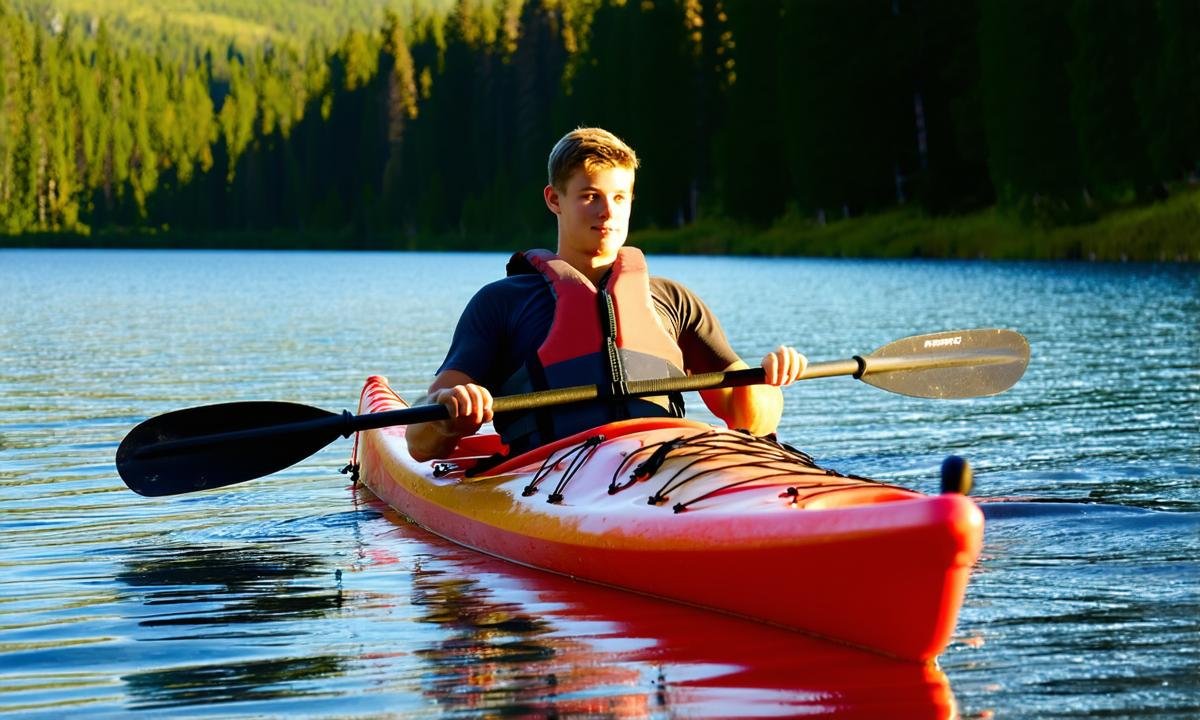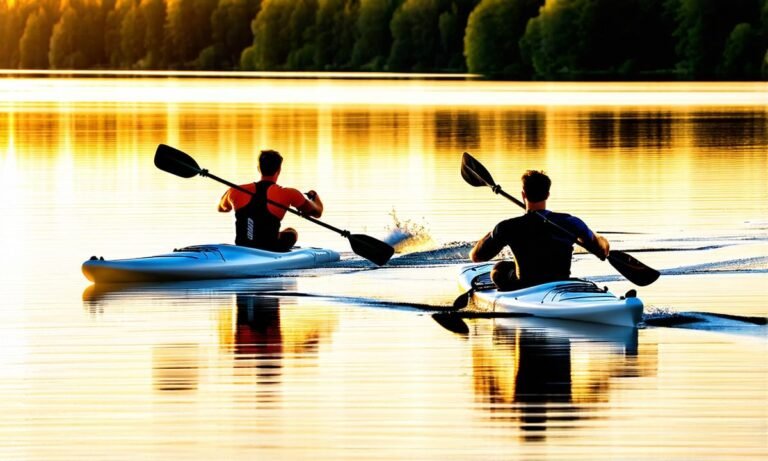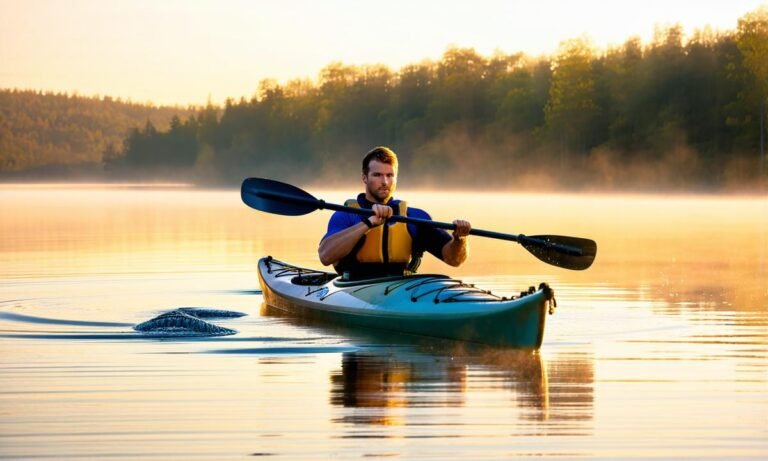Kayaking for Non Swimmers: Tips to Enjoy the Water Safely
Kayaking can seem daunting, especially for those who cannot swim. The thought of paddling through open water might raise concerns about safety and control, yet it offers a thrilling way to enjoy nature from a different perspective.
This activity is indeed accessible to non-swimmers with the right precautions. While swimming skills enhance confidence and safety, many kayaking options provide stability and support, making it safer than one might think.
With tips on choosing the right equipment and techniques that boost comfort in the water, this journey into kayaking for non-swimmers promises to reveal ways to embrace new adventures fearlessly. Get ready to rethink your relationship with water!
How Can Non-Swimmers Safely Enjoy Kayaking in Calm Waters?
For non-swimmers, kayaking on calm waters can be a delightful experience with the correct approach. It is vital to create an environment where comfort and safety take precedence.
The first step involves selecting the right kayak. Opt for a sit-on-top kayak, known for its stability. These kayaks provide an open design that allows easier access and exits, making them ideal for those new to kayaking. Additionally, consider tandem kayaks if you wish to paddle with someone experienced who can assist you.
Wearing a personal flotation device (PFD) is essential. Not only does it keep you afloat in case of capsizing, but it also boosts confidence while you’re out on the water. Ensure you choose a properly fitted PFD that meets US Coast Guard regulations.
Perfecting Your Technique
Smooth motions while paddling are key to enjoying your time in the boat without getting overly anxious about balance. Keep your body centered and use short strokes against the sides of the kayak for better control.
If waves or ripples occur unexpectedly, maintain composure by focusing on your surroundings instead of overreacting—all too often, panic leads to instability causing more anxiety than necessary!
Selecting Safe Locations
Paddle in areas designated as safe for beginners like lakes or slow-moving rivers—these spots tend not to have strong currents or chaotic waves which can cause mishaps. Take note of any local rules regarding kayaking as they differ from one area to another.
“Be cautious and avoid overcrowded beaches where boats converge.” – Outdoor Safety Agency
A Little Planning Goes a Long Way
Before heading out, ensure proper preparations are made:
- Check weather conditions; avoid wind or storms.
- Tell someone about your plans including when you’ll return.
- Crowd yourself with supportive fellow paddlers who look after each other’s safety.
Total immersion into nature could lead anyone feeling overwhelmed at first but keeping these tips close fosters enjoyment amidst tranquility!
5 Essential Tips for Non-Swimmers to Stay Afloat While Kayaking

Many people wonder how they can safely enjoy kayaking without swimming skills. Staying afloat while paddling is integral to having a fun and stress-free experience.
The first tip I always share focuses on the importance of choosing the right personal flotation device (PFD). Wearing a PFD designed specifically for kayaking ensures you remain buoyant in case of an accident. It’s vital that this device fits snugly; it should not ride up over your head when sitting down or be too tight around your chest.
Next, practicing balance before hitting the water can provide significant confidence. Sit on your kayak in shallow, calm areas—like a beach or dock—to get comfortable moving. Simple exercises, like shifting weight from side to side, help you learn how to stabilize yourself while paddling.
Breathe Steadily During Your Adventure
Anxiety often leads to quick breaths, which can increase panic if waves hit unexpectedly. Remembering to breathe steadily promotes relaxation and clarity regardless of conditions you’re facing. Focus on inhaling deeply through your nose and exhaling slowly through your mouth.
Paddle with Purpose and Control
When starting out, opt for longer strokes rather than quick choppy movements—this helps maintain speed while better controlling direction. Consistency in motion will boost stability, allowing you to glide smoothly along the water’s surface instead of bouncing back and forth.
“The beauty lies in embracing each stroke with purpose.” – Author Unknown
Select Calm Conditions Wisely
Your environment plays a massive role in ensuring safety as well. Choose days when winds are light, ideally under 10 mph; strong gusts create ripples that affect control significantly even among experienced kayakers!
- Avoid crowded waterways where unexpected collisions could happen.
- Paddle early morning or late afternoon when conditions tend to be calmer.
- If unsure about weather forecasts, check local resources or apps providing updated reports prior to heading out!
No one wants their first-time kayaking story marred by fear! Taking these essential tips into account allows non-swimmers like me—that’s right; I’m speaking from firsthand experience—to embrace more joyful hours surrounded by nature confidently!
What Are Advanced Techniques for Non-Swimmers in Rough Water?
Navigating rough waters as a non-swimmer can feel intimidating. However, with the right techniques, it becomes manageable and even enjoyable.
The first step to handle challenging conditions involves mastering your kayak’s balance. When dealing with choppy waves or sudden currents, maintaining stability is crucial. Place your feet firmly on the footrests, and keep your knees slightly bent. This position helps absorb shocks from waves while also allowing better control over your movements.
Utilizing Your Paddle Effectively
Your paddle acts not just as a propulsion tool but also as a means of stabilization. Using wide sweeping strokes can help you counterbalance the rocking motion of the kayak. Aim to engage both sides evenly to maintain a straight course and prevent unnecessary tipping.
“The more you use your paddle for balance rather than just propulsion, the steadier you’ll feel.” – Kayaking Coach Jamie Thompson
If waves rise unpredictably while you’re paddling, try leaning slightly into them instead of away. Leaning into the wave decreases tension on the kayak’s hull and enhances its stability against forces trying to tip it over.
Know How to Rescue Yourself
A self-rescue technique is vital if you end up in water unexpectedly. If capsized, remain calm; take a moment before acting to assess your surroundings and regain composure. Swim towards the kayak using strong strokes while keeping it within sight—this creates familiarity amid chaos.
- Flip yourself back onto the kayak by placing one leg across without straddling it initially.
- Knees should stay inside; this maneuver allows floating gradually back atop. This method increases chances for returning safely!
Selecting Protective Gear
Gear selection plays an important role when kayaking in rough conditions beyond wearing basic safety equipment like life jackets:
- Paddle Leash: Prevents losing essential equipment during turbulent times.
- Splash Skirt: Helps avoid excessive water entering during swells or sprays from waves hitting sidewalls directly!
- Drysuit: Protects against cold shock if unintentional immersion occurs with water temperatures below comfortable levels (< 60°F).
“Preparation leads to confidence; confidence paves the way toward success.” – Adventure Guide Susan Wells
Mental preparation matters significantly too! Visualize specific scenarios beforehand: focus on executing skills needed under pressure without dwelling negatively upon fear itself—it builds resilience against bumps along this thrilling journey ahead!
FAQs
What gear do non-swimmers need for kayaking?
Non-swimmers should prioritize wearing a personal flotation device (PFD) that fits well. Along with that, comfortable clothing and stable kayaks enhance safety and enjoyment during your paddling journey.
How to feel secure while kayaking as a beginner?
Beginners can boost their confidence by practicing in calm, shallow waters first. Having an experienced partner along also provides reassurance while learning essential skills without feeling overwhelmed.
Which types of kayaks are best for cautious paddlers?
Cautious paddlers should opt for wider sit-on-top or tandem kayaks. These designs offer better stability and ease of entry, making them perfect choices for those wary about capsizing.


